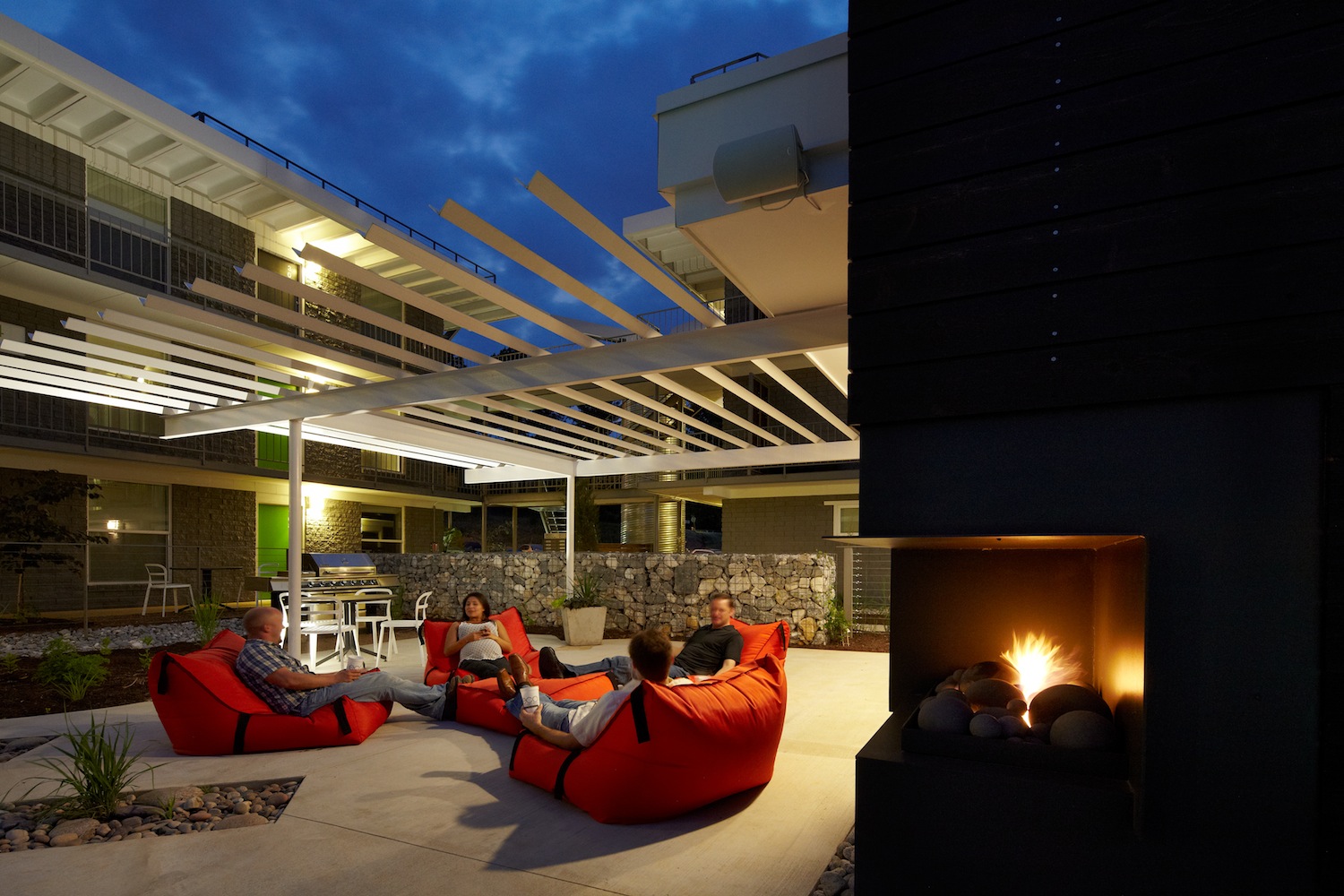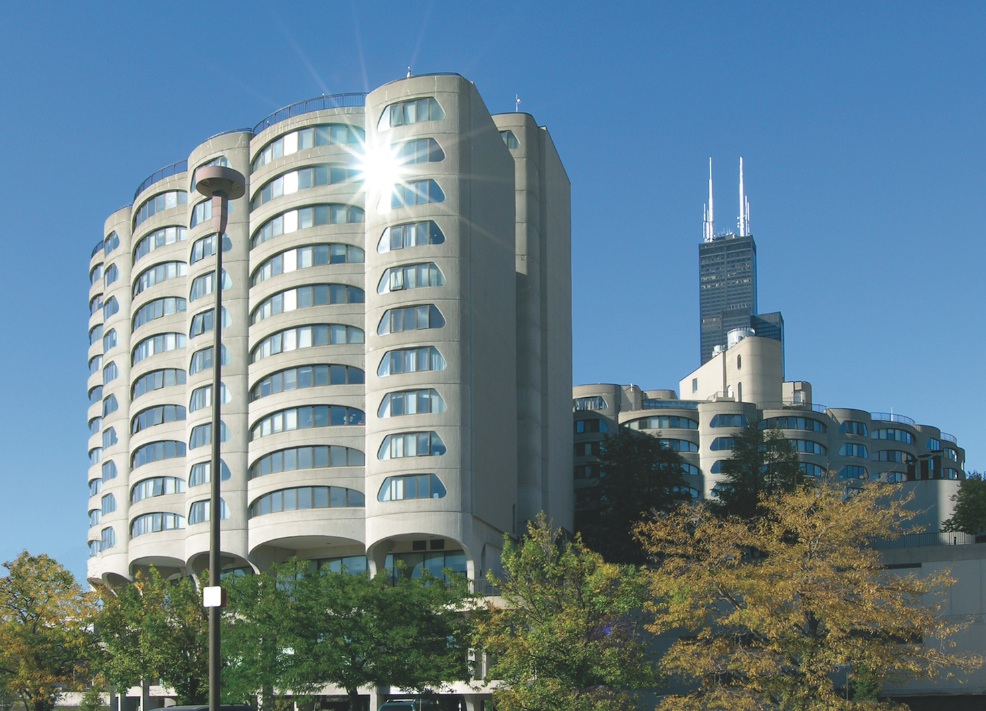River City is a mixed-use, 16-story high rise with 448 condos, located within Chicago’s South Loop along the Chicago River. The name of this complex took on new meaning in June 2011, when the river overflowed its banks, and penetrated the buildings’ lower floors.
Two years later, the city of Chicago passed an ordinance requiring large commercial buildings of more than 50,000 sf to benchmark their energy consumption, and authorized the city to disclose those buildings’ energy efficiency publicly.
Those two events led the owners of River City to spend an estimated $7 million to upgrade the lighting and mechanicals in their complex.
“We decided that if we were going to do this, we’d do it right,” says Jim Sadowski, Director of Operations for Marc Realty, which owns the commercial part of River City and manages the buildings. (The residential part is owned by 800 South Wells Phase II River City Private Residential Condominium Association.)
River City is one of 17 existing multifamily properties to earn Energy Star certification, which became available to this sector on Sept. 16 via a scoring system for multifamily properties that Energy Star and Fannie Mae had been developing for three years. The partners announced the first set of certified multifamily buildings on Nov. 13.
Last year, Fannie’s Multifamily Mortgage Business launched its Green Initiative, and as of the first quarter of 2014 had provided $130 million in Green Preservation Plus loans or in loans that are backed by properties with a Green Building certification. Fannie Mae Multifamily Mortgage Business also partnered with the U.S. Environmental Protection Agency to deliver the 1 – 100 Energy Star score for multifamily properties.

For Eco Modern Flats: ECO Modern Flats in Arkansas lowered its annual energy consumption by 23% after undergoing a major renovation in 2010-2012 that included the installation of several energy- and water-saving products. Photo: courtesy U.S. EPA
Properties are scored, using Energy Star’s Portfolio Manager, on a scale of 1 to 100, which accounts for their energy use across fuel types and normalizes for weather, building characteristics, and business activities. The score represents the property’s percentage ranking compared with similar properties. Properties that score 75 or higher are eligible to earn Energy Star certification.
The goal of this initiative and scoring is to provide multifamily building owners and managers with tools to measure how much energy and water their buildings are consuming and/or wasting, and to be able to compare that performance to similar buildings nationwide.
About one-third of the U.S. population lives in the country’s 500,000 multifamily buildings, and spends about $22 billion on energy use annually. Energy costs for renters have risen 20% over the past decade. U.S. residential water costs rose by 75% in current dollars from 2000 to 2012.
In a survey of 1,000 multifamily properties it conducted in 2012, Fannie Mae found that the least efficient property was spending $165,000 more in annual energy costs than a similar property operating efficiently. The least efficient properties use over three times as much energy and six times as much water per square foot as the most efficient properties.
“Every multifamily property has the opportunity to make high performance property improvements,” wrote Fannie Mae in a September 2014 report titled Transforming Multifamily Housing. “If the entire U.S. multifamily housing stock reduced electricity usage by 15% and natural gas usage by 30%, the annual aggregate cost savings would total more than $3.3 billion.”
Among the first 17 multifamily buildings to earn certification, five were built in the 1920s, belying the notion that older buildings can’t be retrofitted to meet modern high-performance standards. It’s also worth noting that all but one of the certified buildings are located in metros whose local governments are actively attempting to curtail greenhouse gas emissions from their built environments.
River City people image: Jim Sadowski (left), operations chief for Marc Realty, with James Wasniewski, president of Roberts Environmental Control Corp., and Jim Gergits, chief engineer for 800 South Wells, in front of a new Cleaver-Brooks boiler that River City’s owners installed, which contributed to their complex earning Energy Star’s multifamily certification. Photo provided by property management to the U.S. EPA
The certified buildings are a varied bunch, and include:
• ECO Modern Flats in Fayetteville, Ark., which reduced its energy usage by 23% annually after a renovation team installed solar water heaters, closed-cell insulation, white roofing, a green screen, low-E windows, efficient lighting, low-flow showerheads and faucets, dual-flush toilets, and Energy Star-certified appliances.
• The 88-unit affordable housing complex Terrific Tenements in New York City, which cut its fuel costs by 50% by installed new boilers and heating controls.
• River City in Chicago completely replaced its common-area lighting, and installed more efficient equipment that included two 350-h.p. firetube Cleaver-Brooks boilers, and a 1.2-million-Btu Teledyne Laars domestic water heater.
Its owners also installed two new 650-ton Carrier chillers that draw water from the Chicago River that is chilled and then passed over coils to create cool dehumidified air that’s circulated throughout the building. Sadowski explains that this system is a closed loop, meaning there’s a constant flow of water that returns to a marina beneath the complex.
He adds that most of Chicago’s newer high rises “run on river water.”
Sadowski says that Goby, an energy consultant, was instrumental in helping River City’s owners devise an energy plan. “That took a lot of data analysis,” says Sadowski.
Related Stories
Sports and Recreational Facilities | Mar 14, 2024
First-of-its-kind sports and rehabilitation clinic combines training gym and healing spa
Parker Performance Institute in Frisco, Texas, is billed as a first-of-its-kind sports and rehabilitation clinic where students, specialized clinicians, and chiropractic professionals apply neuroscience to physical rehabilitation.
Market Data | Mar 14, 2024
Download BD+C's March 2024 Market Intelligence Report
U.S. construction spending on buildings-related work rose 1.4% in January, but project teams continue to face headwinds related to inflation, interest rates, and supply chain issues, according to Building Design+Construction's March 2024 Market Intelligence Report (free PDF download).
Apartments | Mar 13, 2024
A landscaped canyon runs through this luxury apartment development in Denver
Set to open in April, One River North is a 16-story, 187-unit luxury apartment building with private, open-air terraces located in Denver’s RiNo arts district. Biophilic design plays a central role throughout the building, allowing residents to connect with nature and providing a distinctive living experience.
Sustainability | Mar 13, 2024
Trends to watch shaping the future of ESG
Gensler’s Climate Action & Sustainability Services Leaders Anthony Brower, Juliette Morgan, and Kirsten Ritchie discuss trends shaping the future of environmental, social, and governance (ESG).
Affordable Housing | Mar 12, 2024
An all-electric affordable housing project in Southern California offers 48 apartments plus community spaces
In Santa Monica, Calif., Brunson Terrace is an all-electric, 100% affordable housing project that’s over eight times more energy efficient than similar buildings, according to architect Brooks + Scarpa. Located across the street from Santa Monica College, the net zero building has been certified LEED Platinum.
Museums | Mar 11, 2024
Nebraska’s Joslyn Art Museum to reopen this summer with new Snøhetta-designed pavilion
In Omaha, Neb., the Joslyn Art Museum, which displays art from ancient times to the present, has announced it will reopen on September 10, following the completion of its new 42,000-sf Rhonda & Howard Hawks Pavilion. Designed in collaboration with Snøhetta and Alley Poyner Macchietto Architecture, the Hawks Pavilion is part of a museum overhaul that will expand the gallery space by more than 40%.
Affordable Housing | Mar 11, 2024
Los Angeles’s streamlined approval policies leading to boom in affordable housing plans
Since December 2022, Los Angeles’s planning department has received plans for more than 13,770 affordable units. The number of units put in the approval pipeline in roughly one year is just below the total number of affordable units approved in Los Angeles in 2020, 2021, and 2022 combined.
BIM and Information Technology | Mar 11, 2024
BIM at LOD400: Why Level of Development 400 matters for design and virtual construction
As construction projects grow more complex, producing a building information model at Level of Development 400 (LOD400) can accelerate schedules, increase savings, and reduce risk, writes Stephen E. Blumenbaum, PE, SE, Walter P Moore's Director of Construction Engineering.
AEC Tech | Mar 9, 2024
9 steps for implementing digital transformation in your AEC business
Regardless of a businesses size and type, digital solutions like workflow automation software, AI-based analytics, and integrations can significantly enhance efficiency, productivity, and competitiveness.
Office Buildings | Mar 8, 2024
Conference room design for the hybrid era
Sam Griesgraber, Senior Interior Designer, BWBR, shares considerations for conference room design in the era of hybrid work.

















